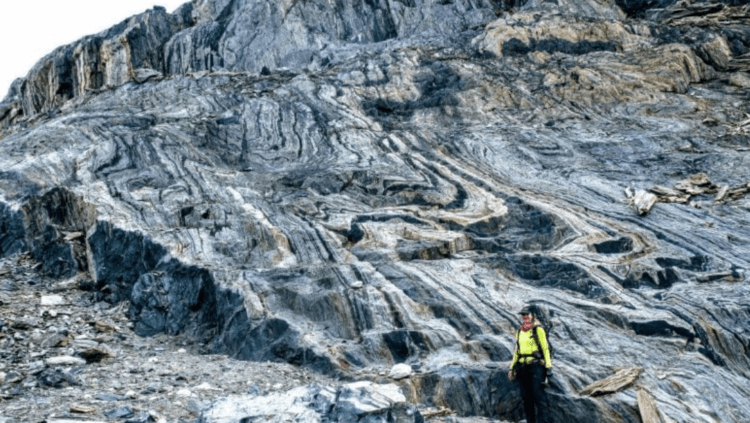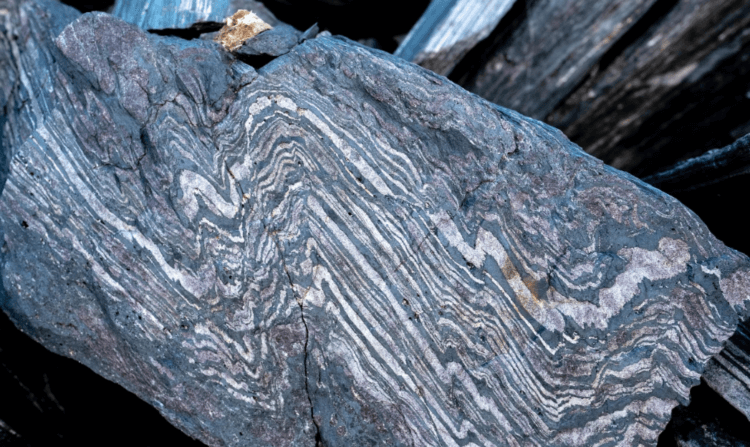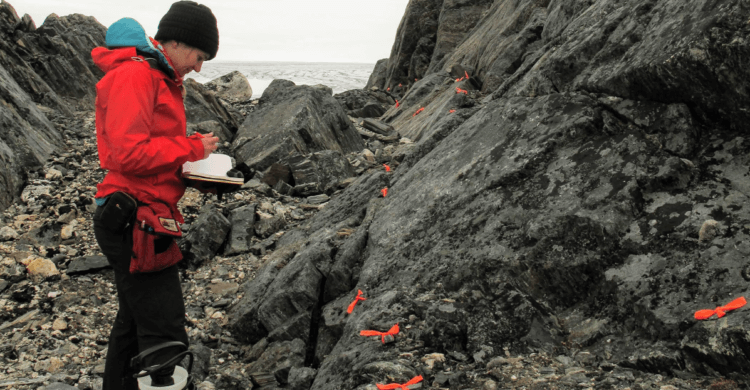The Earth was formed approximately 4.5 billion years ago, but it still took a long time for it to finally form and acquire the structure that we know. Accordingly, the magnetic field on our planet, which was necessary for the origin of life, also did not arise immediately. But when did this happen? There is still no reliable date, but only assumptions on this matter. Now scientists have managed to obtain more accurate information. To do this, iron-bearing rocks in Greenland were analyzed, which can be called the “chronicle of geomagnetism.”

Scientists have found out when the Earth's magnetosphere was formed
Life on Earth appeared before the magnetic field
The magnetic field, which protects the planet from powerful solar radiation, is a necessary condition for the origin of life. However, some evidence indicates that the emergence of the magnetic field and life may not have been sequential events, but occurred in parallel. Moreover, the origin of life could have occurred even a little earlier than the appearance of the magnetosphere.
As we previously told, life arose 3.8 billion years ago. Supposedly, it all started with the nickelback protein, which had metabolism. But that's not what we're talking about now. By studying ancient iron-bearing rocks from the Isua Formation, located in Greenland, scientists were able to fairly accurately determine when the Earth began to have a magnetosphere.

Ferrous deposits of the Isua formation. Photo source: scitechdaily.com
When the magnetic field appeared
The Earth's magnetic field arises in the outer liquid core of the planet, consisting of molten iron. As the inner solid core cools, thermal movements occur in the outer core. Moreover, the rotation of the planet is added to the heat flows. As a result, due to the complex system of liquid iron flows, a dynamo effect occurs.
Some earlier studies by scientists showed that the magnetic field arose 4.2 billion years ago. However, this is not an exact figure and has been disputed by many scientists for various reasons. The fact is that the early planet did not have a solid inner core. Moreover, some research by scientists suggests that the solid core appeared much later. For example, a study published in the journal Nature states that the solid core arose one and a half billion years ago.
The answer to this question may come from iron particles in rocks, which are actually tiny magnets that can store information about both the strength and direction of a magnetic field. At the moment of rock crystallization, these particles are fixed. It would seem that everything is very simple, but any event that heats the rock can “rewrite” information about the magnetic field. For example, this occurs as a result of volcanic eruptions, meteorite falls, tectonic activity, etc.

3.7 billion year old banded iron. Photo source: scitechdaily.com
For this reason, rocks in the Earth's crust tend to have a complex geological history, resulting in the magnetic field information stored in the rocks being “rewritten” many times. But in a recent study, as mentioned above, scientists turned to the Isua belt, which has a unique geology as it sits on top of a thick continental crust that protects the rocks from tectonic activity and deformation for billions of years.
The peculiarity of this formation allowed researchers to obtain evidence that a magnetic field existed 3.7 billion years ago. Researchers report this in the journal Solid Earth. Scientists also believe that the magnetic field was practically unchanged for a long time. According to the results of the study, the strength of the magnetic field was 15 microtesla. The modern magnetic field is 30 microtesla.

Scientists compared rocks 3.7 billion years old and 3.5 billion years old. Photo source: scitechdaily.com
It is known that in the early history of the planet the solar wind was much more powerful than it is now. Perhaps an increase in the strength of the magnetic field, as well as a decrease in the intensity of the solar wind, eventually allowed life to leave the ocean, which served as its protection, and populate the continents.
Don't forget to subscribe to our Zen and Telegram channels to Don't miss the most interesting and incredible scientific discoveries!
As scientists report, knowledge of how the magnetic field of our planet changed in its early history will make it possible to understand when the solid core of the Earth began to form. In addition, this data will help determine how quickly heat leaves the subsoil.